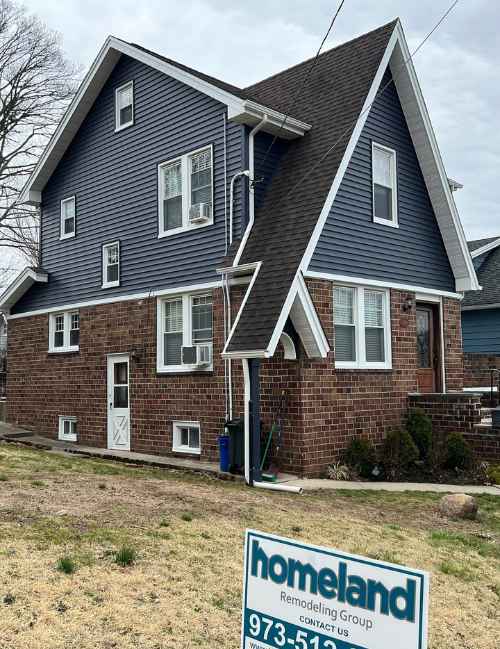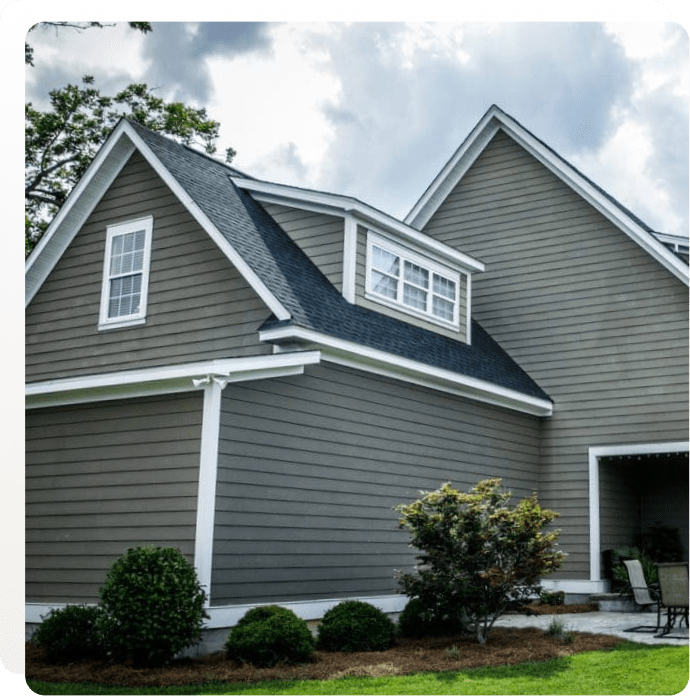The Essential Guide to the Different Kinds Of House Siding and Their Special Benefits
In the world of home improvement, picking the best exterior siding is an essential decision that impacts both visual allure and useful performance. The range of products offered, such as wood, plastic, fiber cement, block, and metal, each deal one-of-a-kind benefits that deal with various needs and preferences. Comprehending these distinctions can dramatically boost the durability and value of a home - morris siding contractor. However, with a lot of options to think about, which house siding material really stands out for your particular task? Checking out these selections can cause educated decisions that straighten with both style and practicality.
Wood Exterior Siding
Wood home siding, a popular choice for household exteriors, offers a classic visual that incorporates all-natural elegance with architectural integrity. This house siding material is offered in numerous designs, including clapboard, shingles, and board-and-batten, permitting home owners to customize their appearance to match their design choices. Timber exterior siding is normally crafted from resilient species such as cedar, redwood, or ache, which are recognized for their strength and capability to withstand ecological stressors.
Among the main advantages of wood siding is its superb insulation homes, which can add to energy performance and lower home heating costs. In addition, wood house siding is biodegradable, making it an eco friendly alternative when sourced sustainably. Routine upkeep, including paint or discoloration, can prolong its life-span and enhance its look, allowing house owners to preserve the natural beauty of the timber.
Nevertheless, possible drawbacks include sensitivity to pests, rot, and weather condition damages, demanding sufficient therapy and upkeep - morris siding contractor. Despite these issues, when effectively taken care of, timber siding can offer a attractive and resilient solution that enhances the personality of a home while offering a warm, welcoming atmosphere

Plastic Home Siding
Vinyl siding has actually become a leading selection for house owners seeking a low-maintenance outside option that incorporates toughness and cost. This functional material is crafted from polyvinyl chloride (PVC), making it immune to different climate condition, consisting of moisture and UV rays. As an outcome, vinyl home siding does not warp, rot, or fade, making sure lasting visual allure.
Among the primary benefits of plastic house siding is its considerable variety of designs and colors, permitting home owners to attain the desired seek their residential or commercial property without the need for constant repainting. Furthermore, vinyl exterior siding is easy to mount, which can substantially minimize labor prices throughout construction or renovation tasks.
Vinyl home siding additionally contributes to energy effectiveness. Numerous alternatives feature insulation backing, which enhances thermal performance, assisting to preserve comfy indoor temperature levels and possibly decreasing energy bills. Its smooth surface area facilitates easy cleaning, needing just routine cleaning with a yard pipe to get rid of dust and debris.
Fiber Cement Home Siding
Fiber concrete home siding has gotten traction among home builders and house owners alike because of its amazing combination of sturdiness and aesthetic convenience. Made up of a combination of concrete, cellulose, and sand fibers, this house siding alternative is crafted to stand up to extreme weather problems, including high winds, heavy rain, and temperature variations, making it a resilient option for residential outsides.

One of the key benefits of fiber concrete exterior siding is its resistance to parasites, such as termites, and its non-combustible nature, offering improved fire safety and security. morris siding contractor. Furthermore, it is offered in a wide selection of designs, appearances, and colors, enabling house owners to accomplish their desired aesthetic without giving up efficiency
One more benefit is its reduced maintenance demands; fiber concrete siding usually needs paint or why not try these out discoloration every 5-10 years, which is less regular than various other products. Furthermore, its durability contributes to a reduced overall cost of ownership, as it lowers the need for frequent repair work or substitutes.
Inevitably, fiber concrete exterior siding represents an exceptional financial investment for those seeking a resilient, attractive, and flexible exterior option, integrating both type and function to improve the home's visual charm.
Metal Exterior Siding
The appeal of metal exterior siding hinges on its durable durability and modern-day aesthetic appeal, making it a favored selection for modern style. Readily available in products such as light weight aluminum and steel, metal exterior siding uses a series of colors and surfaces, enabling property owners to accomplish an individualized appearance that matches their design vision.

Energy efficiency is one more considerable advantage, as lots of steel home siding items are made with insulation alternatives that help regulate indoor temperature levels. This can lead to reduced energy prices over time. Additionally, metal siding is frequently recyclable, making it an ecologically friendly choice for sustainability-minded property YOURURL.com owners.
The installation procedure for steel house siding can be reasonably uncomplicated, leading to a quicker turnaround time for construction tasks. Overall, steel home siding integrates performance and style, making it a practical alternative for those looking for a long-lasting and visually enticing outside surface.
Brick and Rock House Siding
Brick and rock exterior siding stands apart as a timeless selection that improves the aesthetic appeal of any type of home. Known for their resilience and reduced maintenance, these products supply an exceptional roi while boosting the home's visual allure. Offered in different colors, textures, and patterns, brick and stone can be tailored to match varied architectural designs, from traditional to modern.
One of the key advantages of block and rock exterior siding is their power effectiveness. Both products possess natural shielding residential properties that help regulate interior temperature levels, potentially minimizing heating & cooling expenses. Furthermore, they supply exceptional fire resistance compared to other siding choices, adding to boosted safety.
One more advantage is their long life. Block and rock can last for decades, often requiring very little upkeep past periodic cleansing. Unlike timber house siding, they are unsusceptible pests and rot, guaranteeing a resilient outside that stands up to the components.
Verdict
In summary, the selection of house siding substantially impacts a home's visual charm, energy effectiveness, and maintenance needs. Each type of siding-- whether timber, vinyl, fiber concrete, metal, or block and stone-- uses distinct advantages tailored to numerous house owner preferences and ecological conditions.
One of the main advantages of timber home siding is its excellent insulation homes, which can add to energy performance and lower heating prices. Additionally, timber siding is eco-friendly, making it an eco friendly choice when sourced sustainably.One of the key benefits of steel siding is its resistance to different environmental variables.Energy effectiveness is an additional significant advantage, as lots of steel exterior look at this website siding items are designed with insulation options that assist manage indoor temperatures. Each type of exterior siding-- whether timber, plastic, fiber cement, metal, or brick and stone-- provides one-of-a-kind benefits tailored to various property owner preferences and ecological problems.